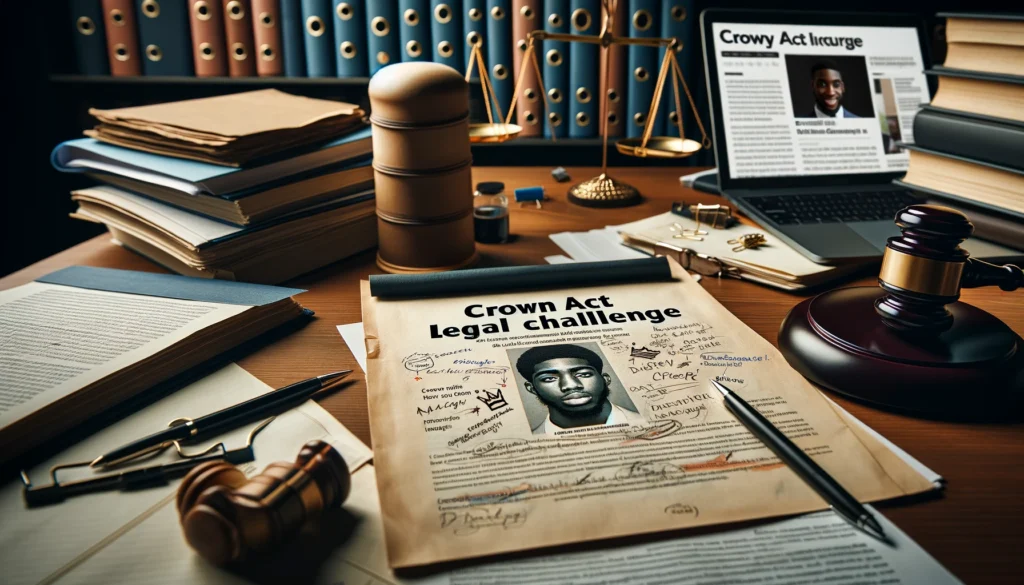The Battle Over Hair: Darryl George’s Fight Against School Dress Code

By Darius Spearman (africanelements)
Support African Elements at patreon.com/africanelements and hear recent news in a single playlist, plus get early access to ad-free video content.
Key Takeaways
- Darryl George’s Suspension: Challenged his school’s dress code over hair length, igniting legal and social debates.
- CROWN Act Limitations: The act doesn’t address hair length, leaving a gap in protections against discrimination.
- School Policy Debate: Sparked discussions on racial discrimination and the need for inclusive educational policies.
- Community Response: Showcased strong community and legal support for George, emphasizing cultural and racial identity respect.
- Implications for Future Policies: Highlighted the necessity for clear, inclusive policies that honor students’ cultural and racial identities across the U.S.
Introduction to the Darryl George Case
The story of Darryl George, a high school junior, challenges the norms of educational policy and racial discrimination. Facing suspension from Barbers Hill High School for his locs, George finds himself at the heart of a legal battle. The battle questions the balance between school policy and individual rights.
“All because of my hair? I can’t get my education because of my hair. I can’t be around my peers and enjoy my junior year because of my hair.” – Darryl George expressing his frustration (NBC News).
The CROWN Act and Its Limitations
The intention behind the introduction of the CROWN Act in Texas was to prevent hair discrimination. The act highlights the complexity of such policies in educational institutions. Yet, as George’s case reveals, the Act’s silence on hair length leaves a gap ripe for controversy.
“The act…outlaws discrimination on the basis of ‘hair texture or protective hairstyles associated with race.’” It “does not, however, mention anything about hair length.” (The Texas Tribune).
School Policy vs. Racial Discrimination
At the core of this dispute is the school’s dress code, which delineates the acceptable hair length for male students. This policy has ignited a debate on racial discrimination in schools and the extent to which educational policies should accommodate cultural and racial identities.
“We appreciate clarification from the court because it’s an important question. We’re glad to understand what the law means.” – Sara Leon, a representative for the school district (NBC News).
Legal and Community Responses
Trial Date and Legal Battle
The community’s reaction and the legal arguments presented in George’s defense underscore the broader implications of this case for students nationwide. It speaks to the ongoing struggle to ensure educational environments respect and reflect the diversity of student backgrounds.
“Darryl’s hair has his family member’s dreadlocks intertwined with his own and has personal and cultural significance, his attorney said.” (The Texas Tribune).
A trial date has been set to hear arguments about whether Barbers Hill ISD violates the CROWN Act. The case marks a significant moment in the fight against hair discrimination in schools. This legal confrontation aims to clarify the protections afforded by the CROWN Act regarding hair length and protective hairstyles associated with race (Houston Public Media).
Federal Civil Rights Lawsuit
In a bold move, George’s family has filed a federal civil rights lawsuit against Texas Governor Greg Abbott and Attorney General Ken Paxton. This action challenges the state’s commitment to enforcing the CROWN Act and protecting students from racial discrimination based on their hairstyles. The lawsuit is a critical step in addressing systemic issues within educational policies. Further, it advocates for the rights of students to express their cultural and racial identity without fear of punishment (Spectrum News).
Community and Legislative Support
The case has garnered support from legislators and community activists. Consequently, it highlights a collective effort to ensure the CROWN Act’s intentions are fully realized in educational settings. State Rep. Rhetta Bowers, one of the Act’s authors, has voiced strong support for George. Further, she emphasizes that the law was created to prevent exactly this type of discrimination. This widespread backing underscores the importance of solidarity in combating racial bias. Additionally, it seeks to foster an inclusive society where all students feel valued and respected (The Texas Tribune).
Moving Forward: Implications for Policy and Education
Darryl George’s stand against his school’s dress code is more than a personal battle; it’s a pivotal moment in the ongoing discussion about racial discrimination and individual rights. Moreover, it brings attention to the role of educational policies in shaping a more inclusive society.
FAQ
Q: What does the CROWN Act stand for?
A: Creating a Respectful and Open World for Natural Hair.
Q: Can schools in Texas enforce dress codes that restrict hair length?
A: While the CROWN Act protects hair texture and styles associated with race, it does not explicitly cover hair length, leading to legal debates and challenges like Darryl George’s.
Q: What are the implications of Darryl George’s case for students in other states?
A: This case highlights the need for clear, inclusive policies that respect students’ cultural and racial identities, potentially influencing future legislation and school policies beyond Texas.
About the author: Darius Spearman is a professor of Black Studies at San Diego City College, where he has been pursuing his love of teaching since 2007. He is the author of several books, including Between The Color Lines: A History of African Americans on the California Frontier Through 1890. You can visit Darius online at africanelements.org.
